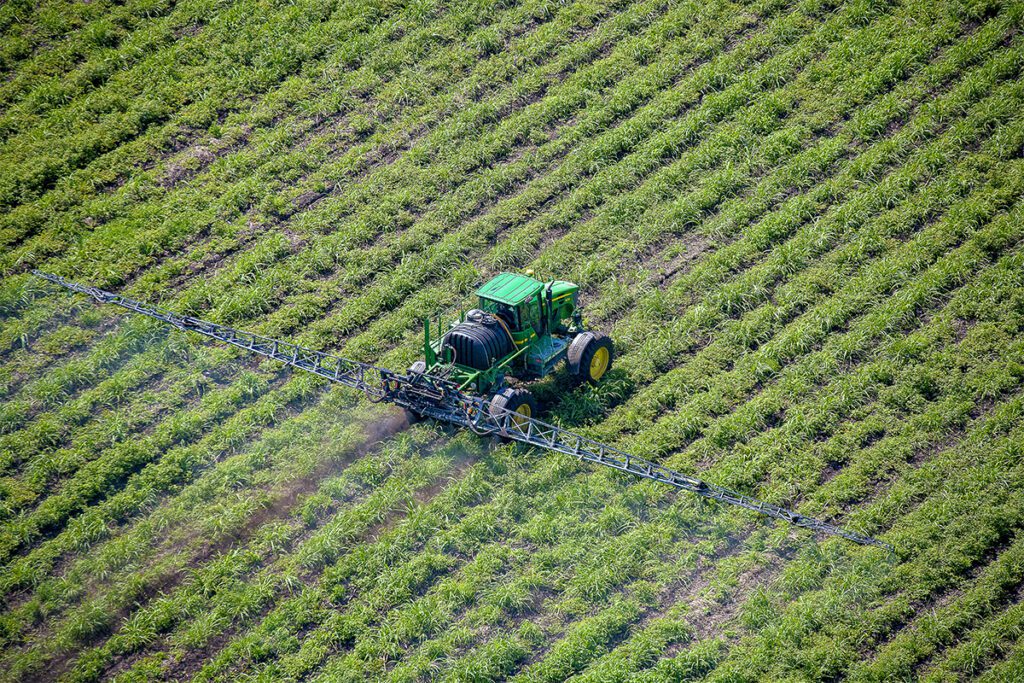U.S. Sugar Is Home to the Largest, Contiguous, Privately Owned Wi-Fi Network in America
by HEATHER MACHOVINA
U.S. Sugar was built on innovation. In the beginning, the key to its continued growth was the Clewiston Sugar House, which could process 1,500 tons of sugarcane per day. Since the 1940s, it has been adapted, changed, and enlarged; setting records for being one of the most efficient single-tandem mills in the world. Now, U.S. Sugar’s mill can grind up to 42,000 tons of sugarcane daily, during the busy harvest season. Furthermore, U.S. Sugar became the first refinery in the United States to completely integrate the entire sugar making process. Their focus on technological innovations in agriculture has led US Sugar to build and own the largest, private Wi-Fi network in precision farming today.
U.S. Sugar’s Wi-Fi network is the largest, contiguous mesh, privately owned Wi-Fi network in the country. It spans a 270-square-mile-area of its South Florida farmland. It plays an integral role in the operation of U.S. Sugar’s advanced precision agriculture technology.
“Across our farmland, our fleet of state-of-the-art ‘smart’ harvesters, tractors, and other equipment uses our wireless network to transmit and share real time data to help make our process of farming sugarcane, citrus, and fresh vegetables more sustainable, efficient, and agronomic,” says Carl Stringer, the Vice President of Internet Technology at U.S. Sugar in Clewiston, Florida. Using advanced practices allows U.S. Sugar to easily maximize their crops in both quality and quantity.
“Our automated radio frequency identification (RFID) system works in tandem with the railroad system to coordinate the transportation of our harvested sugarcane crop with an optimum delivery window to our sugarcane milling operations,” continues Stringer. Coordinating the timing of harvesting operations with the railroad transportation to their mill operations has greatly improved the overall quality of the products and the efficiency of the process. Sugarcane begins to deteriorate quickly after eight hours, as sugars convert to alcohol, so these technological improvements have greatly improved the quality of their products. Named U.S. Sugar’s Sugarcane Train, the rail saves on fuel, cuts down on truck traffic, and reduces the amount of fossil fuel emissions, too.
In 2006, U.S. Sugar began making these changes toward better technology to increase sugar production, while working to reduce overall costs and waste. The installation of U.S. Sugar’s Wi-Fi network was completed in 2011, and today, it utilizes 23 towers across their entire network. It sets standards for the company in all areas of operations like work management, materials management, and operational efficiency. The data collected over Wi-Fi includes fuel usage, engine running hours, harvester blade heights, and equipment speed, direction, current location and status, among other inputs.
“The data is constantly analyzed so that our harvest operations team can continue to make refinements to our process,” Stringer explains. The benefits of having this data includes reduced fuel consumption, increased productivity, decreased downtime, and more accuracy in the field.
In addition to their Wi-Fi network, U.S. Sugar’s farmers use an advanced GPS technology known as Real Time Kinematic (RTK), which offers sub-inch accuracy in field prep, planting, and harvesting. When combined with the auto-steer technology integrated in their harvesters, the result is a process with straighter lines, more precise cutting and turning, and a reduction in fuel. “In most cases, our harvesters are completely automated, and operators do not need to handle the steering,” says Stringer. The entire sugarcane crop at U.S. Sugar is now harvested by machines. With auto-steer, the U.S. Sugar farmers can observe field conditions and ensure the crop is being harvested correctly, while still sitting inside the cab. This increases overall safety and has drastically reduced work-related injuries. Increasing automation has also lowered the unit cost because they are using their available resources more efficiently.
This technology in agriculture has an environmental benefit as well. As one of sugarcane farmers’ Best Management Practices (BMP), RTK technology allows fields to be leveled prior to planting, which helps reduce water runoff, and keeps more of our naturally nutrient-rich soil on the fields. U.S. Sugar and other area farmers are partners in Everglades Restoration, which has multiple programs working to restore, preserve, and protect our South Florida ecosystem from improper agricultural byproducts. Furthermore, the U.S. Sugar refinery is fully integrated, using all of its resources and waste products to improve their environmental footprint. Bagasse, the fibrous material left after the sugarcane stalks are crushed, is used to run a boiler. It is turned into biofuel that powers the sugar factory and refinery operations, creating enough electricity per hour to power their plant entirely on bagasse biomass. One ton of recycled bagasse is capable of producing the same amount of energy as 50 gallons of fuel oil. This clean burning biofuel is another example of the commitment U.S. Sugar has to clean, renewable energy and environmental protection.
U.S. Sugar’s corporate Internet Technology leadership has worked to share knowledge and best practices with other agribusinesses around the world. Their Vice President of IT, Carl Stringer, is a member of SAP’s global leadership council for IT in agriculture.
The goal at U.S. Sugar is to utilize the latest science and technology to produce the best sugar, citrus, and fresh vegetables. Their workers stay connected through their vast Wi-Fi network, allowing the use of advanced practices in planting, harvesting, and transportation through their high-tech operations. Overall, they have maximized their crops, while reducing costs and waste, and protecting the environment through better methods. Advanced technologies in agriculture enable American farmers, like U.S. Sugar, to be sustainable and efficient at growing food for American families.

